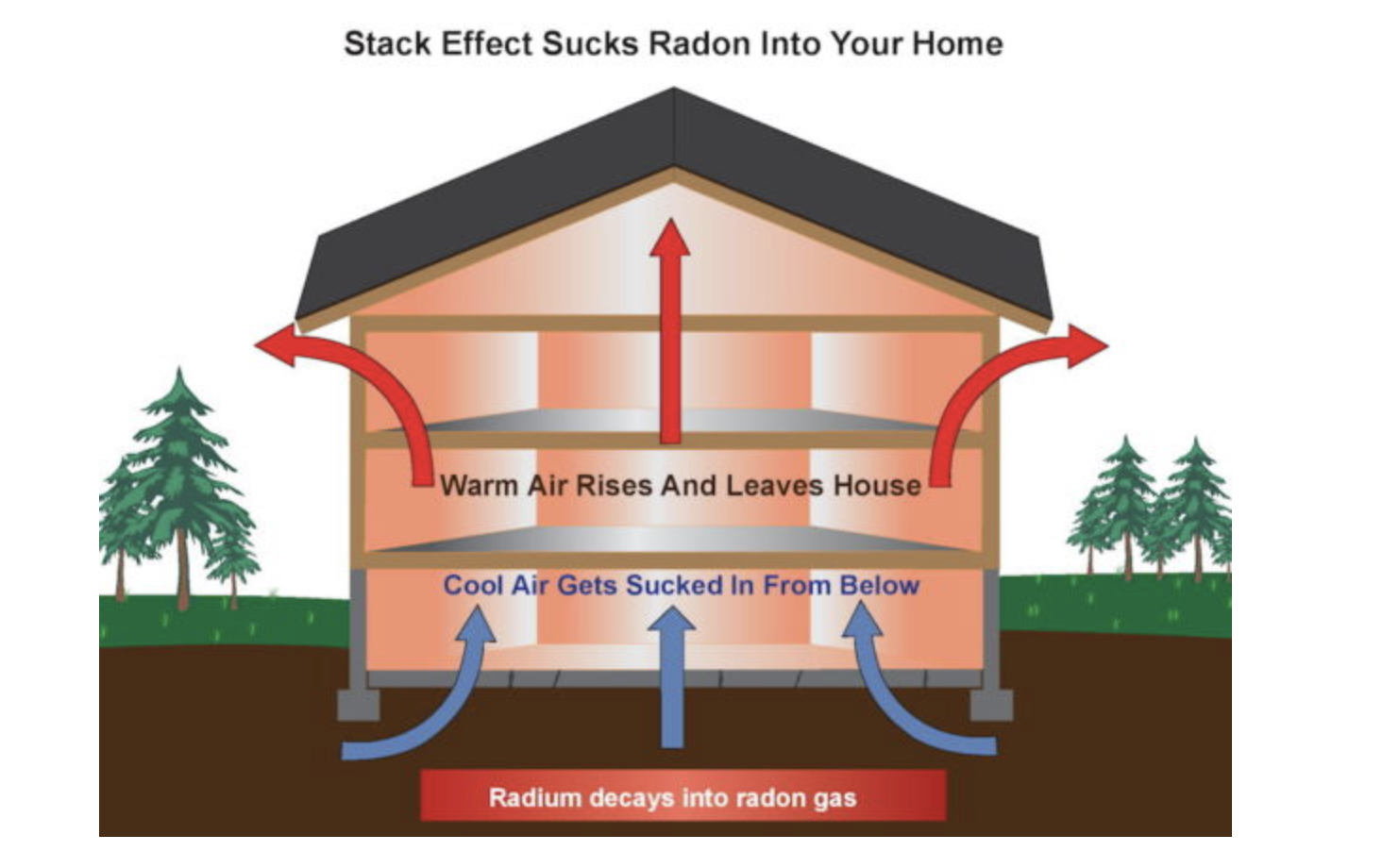
It's naturally occurring and comes from the decay of uranium in the soil.
You can't see radon.
You can't smell radon.
You can't taste radon.
After smoking, radon is the second leading cause of lung cancer in the United States.
Radon is found naturally in the environment.
Radon is a product of the decay of uranium in rocks and soil.
Radon can move up through the ground and enter buildings through cracks and holes in the foundation.
While often discussed in the context of homes, radon can be found in schools, workplaces, and public buildings.
Radon is considered a significant indoor air quality issue.
Radon levels can vary greatly by geographic region due to differences in soil composition.
Homeowners can use radon testing kits to check levels in their homes.
Homeowners can use radon testing kits to check levels in their homes.
If high levels are detected, radon mitigation systems can be installed to reduce levels.
Some homes are built with passive radon reduction systems.
Active radon mitigation systems, which use a fan to vent radon outside, are more effective.
The U.S. Environmental Protection Agency (EPA) recommends taking action to reduce radon levels if they are 4 pCi/L (picocuries per liter) or higher.
The World Health Organization notes that no level of radon exposure is considered completely safe.
Radon can also be present in groundwater, which may introduce it into homes through well water.
The decay products of radon (often called "radon daughters" or "radon progeny") can attach to dust particles and be inhaled.
Radon has a half-life of about 3.8 days, meaning it decays relatively quickly, but it's constantly being produced.
Radon levels outside are generally low and not harmful.
Radon levels are usually highest in basements and ground floors that are in contact with the ground.
The EPA has divided the United States into three radon zones to indicate potential radon levels
Zone 1 counties have the highest potential for elevated radon levels.
Radon levels inside a home can be higher during the winter months due to less ventilation.
Its concentration disperses quickly in the outdoor air, posing little risk.
Without proper ventilation, radon can accumulate to levels that pose health risks.
The risk of lung cancer from radon is much higher for smokers than for nonsmokers.
There is some evidence to suggest that children may be more sensitive to radon exposure than adults.
Friedrich Ernst Dorn, a German physicist, discovered radon.
Radon was initially known as "radium emanation" because it was observed to be a gas released by radium.
Radon is one of the decay products in the long series of decays that occur as uranium decays to lead.
Radon has 37 known isotopes, but the most stable and common isotope is Radon-222.
The most common source of radon in the environment is the decay of radium-226.
The primary health risk from radon comes from inhaling radon gas and its decay products.
Besides lung cancer, some studies have suggested a potential link
